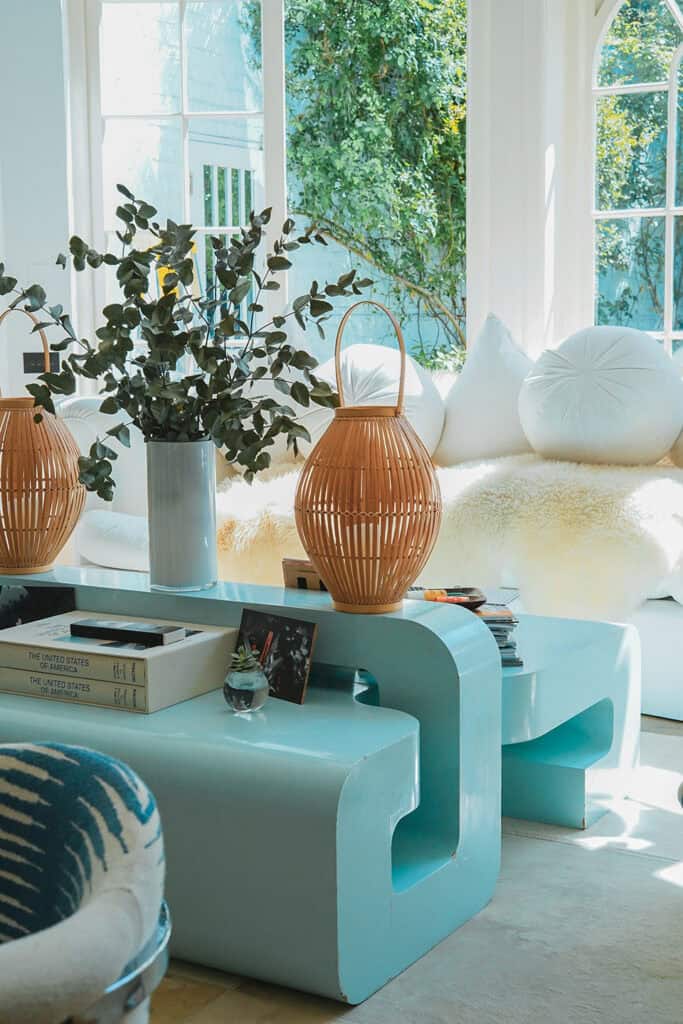
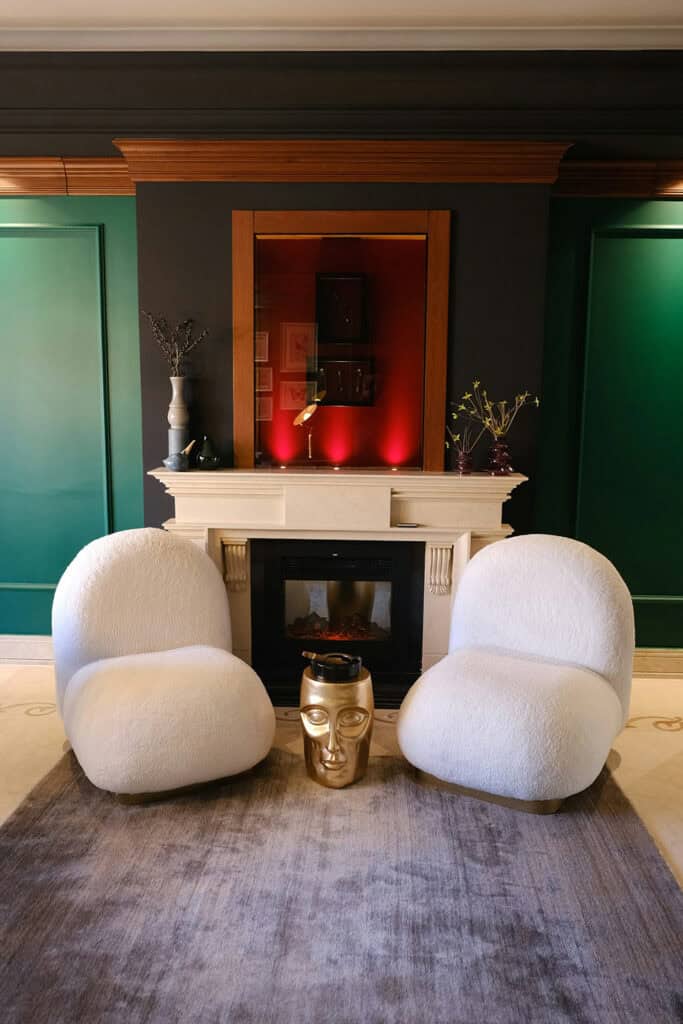
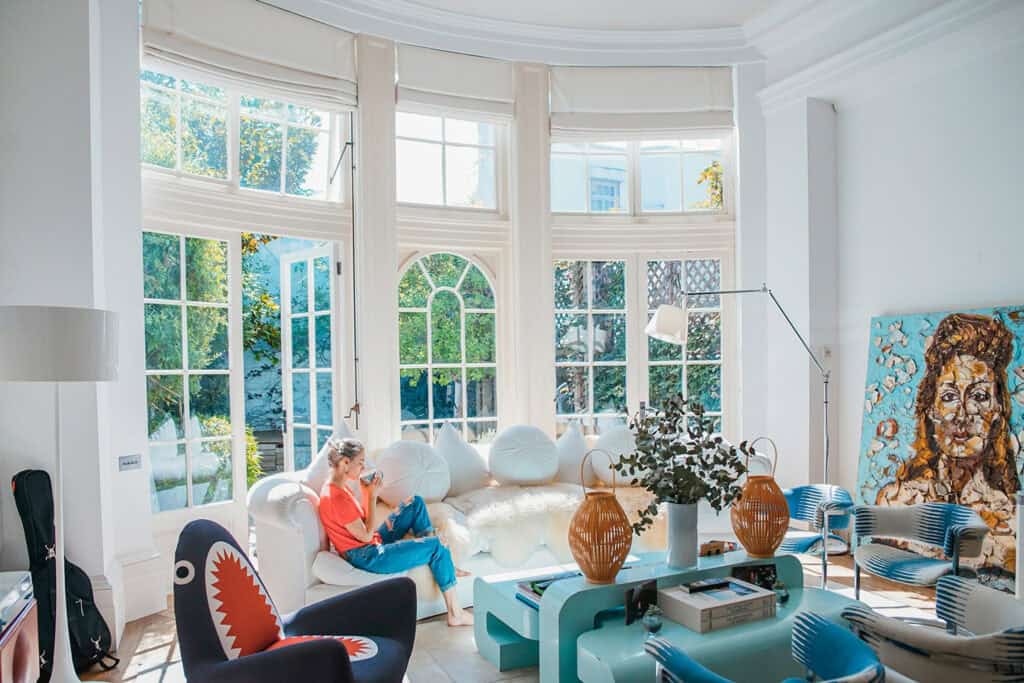
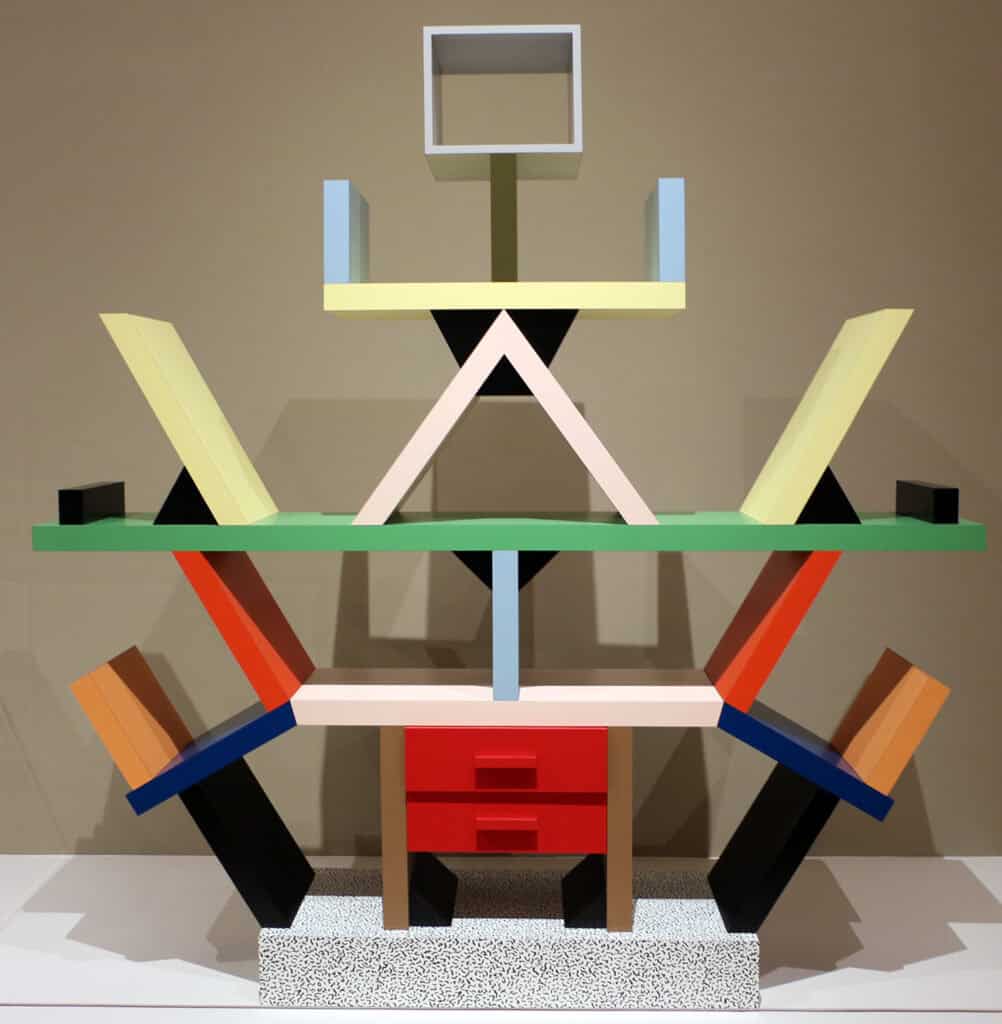
Want to make your home stand out with creativity and boldness? Postmodern interior design is the answer. Postmodern design started in the late 20th century.
It breaks away from old rules and uses fun, mixed, and unique styles. This style mixes past influences with modern ideas, creating spaces full of personality and energy.
At Landmarks Architects, we focus on postmodern design, helping you change your space with creativity and style.
In this article, we will cover:
- Bold geometric patterns and shapes in interior design
- Bright colors and fun patterns to energize your home
- Mixing old styles with a modern postmodern twist
- Statement pieces that make your space unique
- Combining materials and textures for lively interiors
Ready to try postmodern interior design? Keep reading to find out how to create a home that’s as unique as you are!
What is PostModern Interior Design?
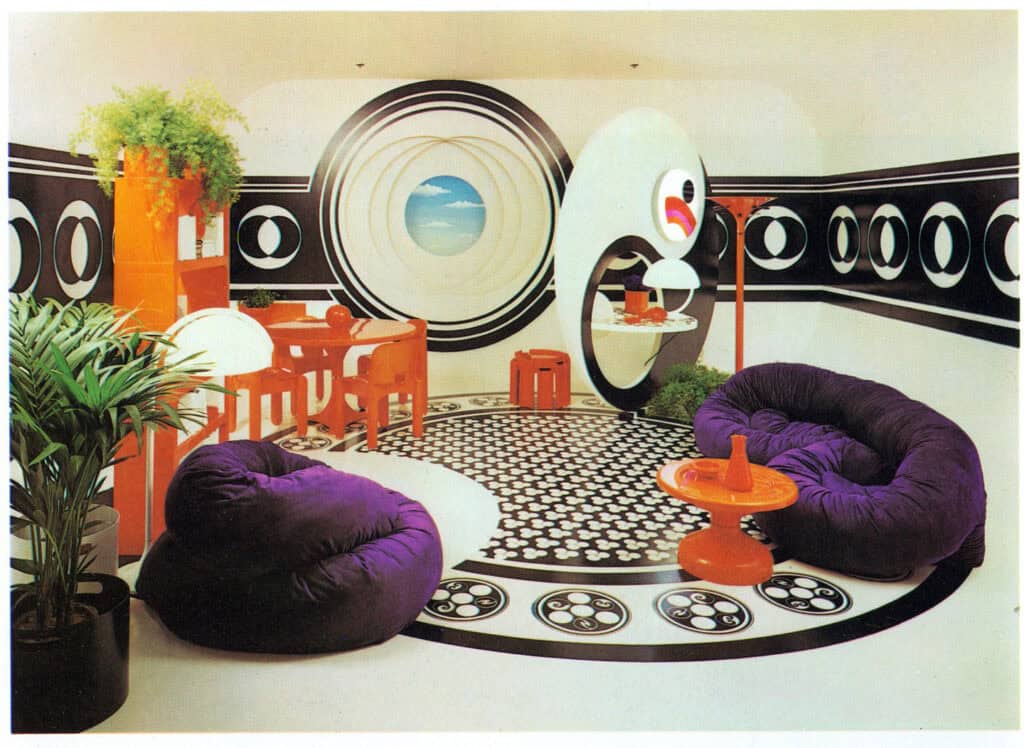
Postmodern interior design emerged in the late 20th century, around the 1970s and 1980s, as a response to the minimalism of modern design. Modernism focused on functionality and simplicity, but many felt it was too rigid and disconnected from the lively world.
Postmodernism grew out of a desire to break free from these limits and embrace unconventional ideas and diversity.
Postmodern interior design is known for its playful, eclectic approach. It combines historical styles with modern twists. This creates spaces that are both visually interesting and full of personality.
Postmodern design challenged traditional ideas about architecture, interior decor, and furniture. It introduced bold colors, geometric patterns, and organic shapes—things that were not part of modernism.
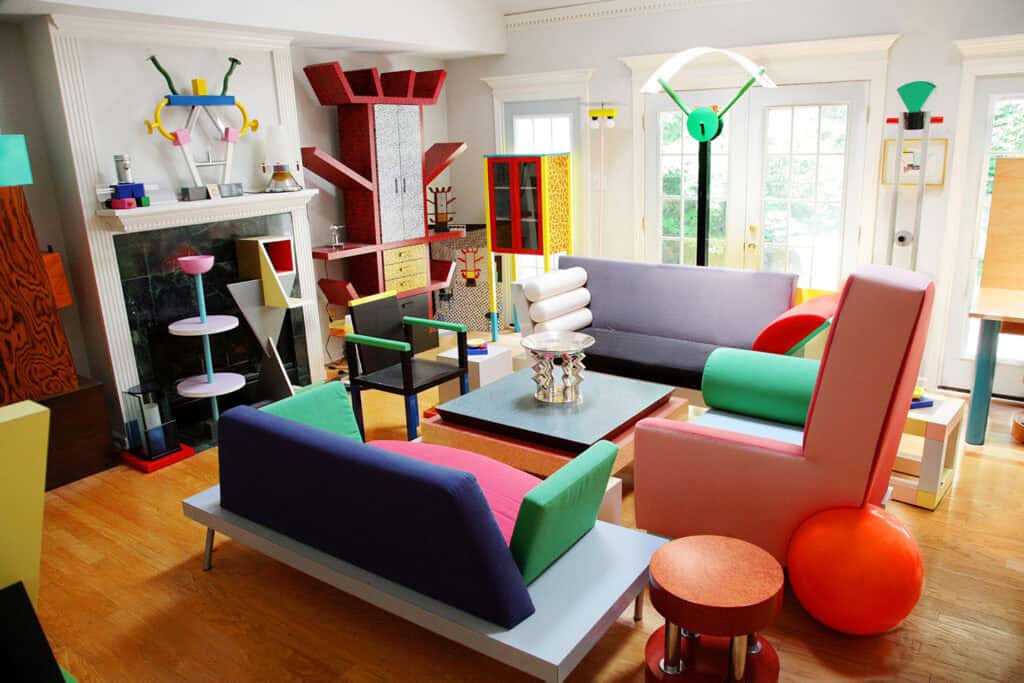
This new approach encouraged creativity, freedom, and experimentation. It led to the postmodern style we see today. The philosophy of postmodernism was to reject conventional ideas and embrace complexity, humor, and contradiction in design.
The postmodern movement created a time when there were no strict rules. Instead, it was a mix of influences, textures, and forms, leading to dynamic, fun, and surprising interiors.
See Also What Are the Differences Between Postmodernism and Deconstructivism? 5 Key Differences
5 Key Elements of PostModern Interior

1. Geometric Patterns and Unconventional Ideas
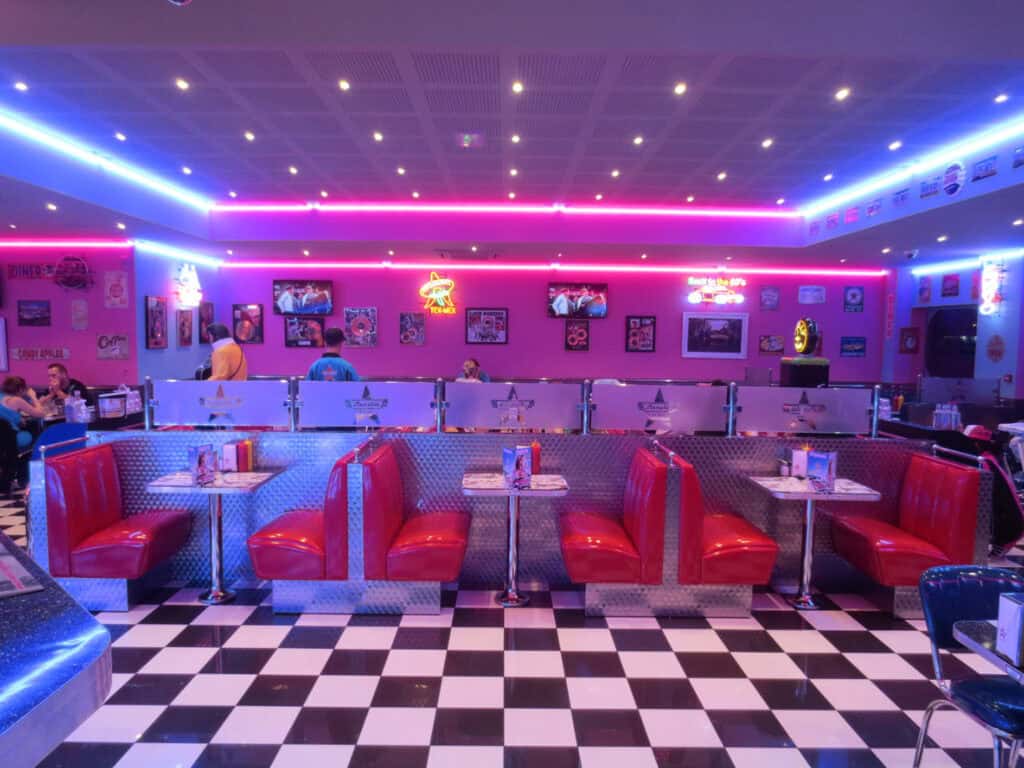
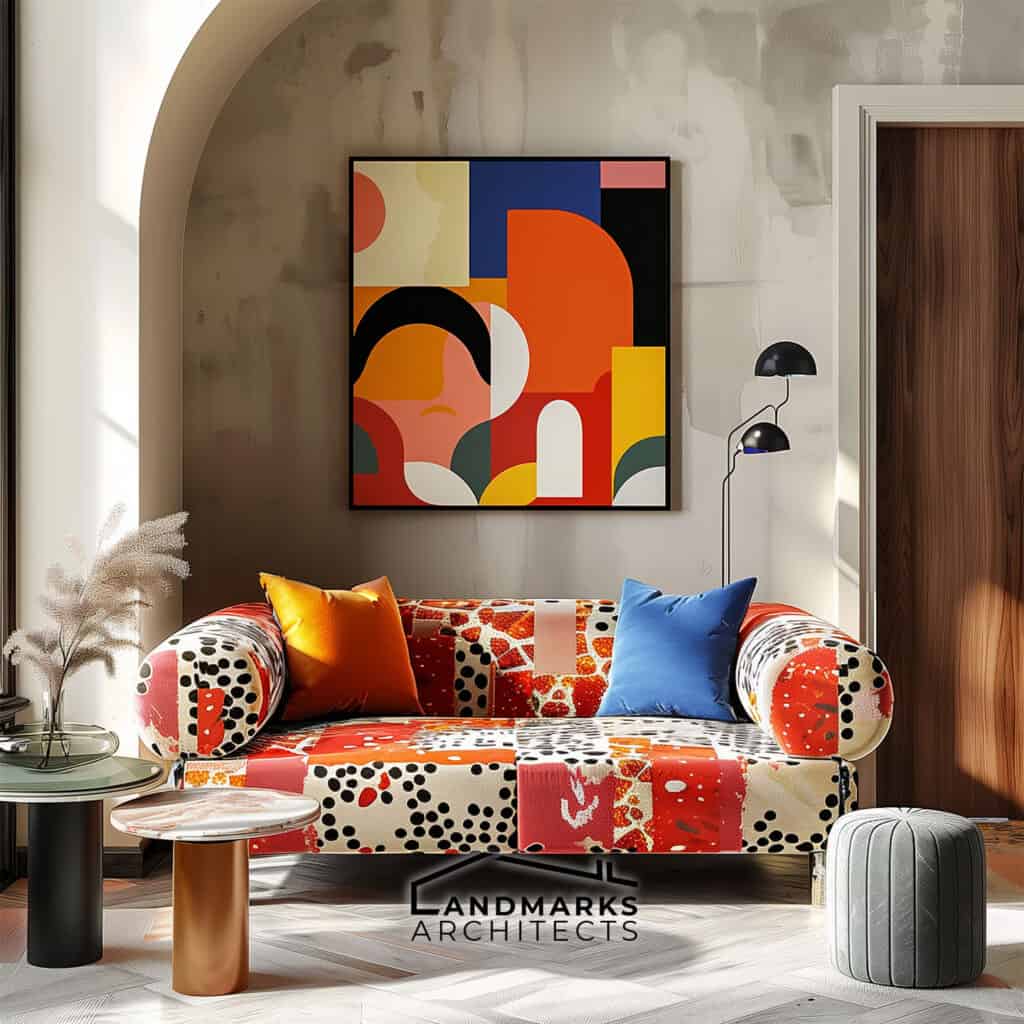
Postmodern interior design is about embracing unconventional ideas and experimenting with geometric shapes. Unlike the restrained modern design of the past, postmodern interiors mix bold patterns and unusual shapes in furniture and decor.
Geometric patterns, like squares, triangles, and circles, often appear on walls, rugs, and furniture. These shapes create rhythm and visual interest in the room.
These patterns are paired with bold colors and textures to show the playful and avant-garde spirit of the style. Postmodern design also uses organic shapes, like curvy tables or sculptural chairs, which can act as a statement piece in any space.
This move away from traditional forms gives room for character and unique charm.
See Also Emphasis in Interior Design: 6 Techniques to Transform Your Space
2. Vibrant Colors and Playful Patterns
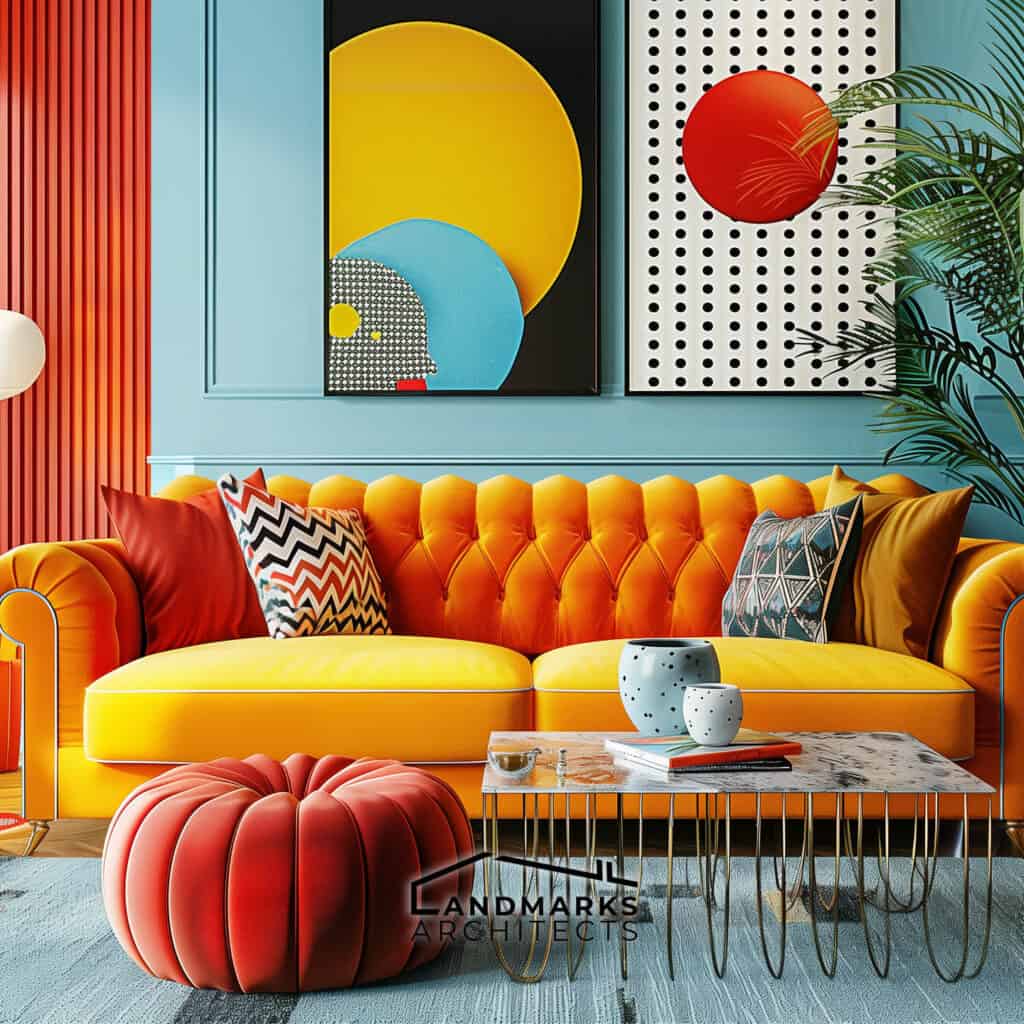
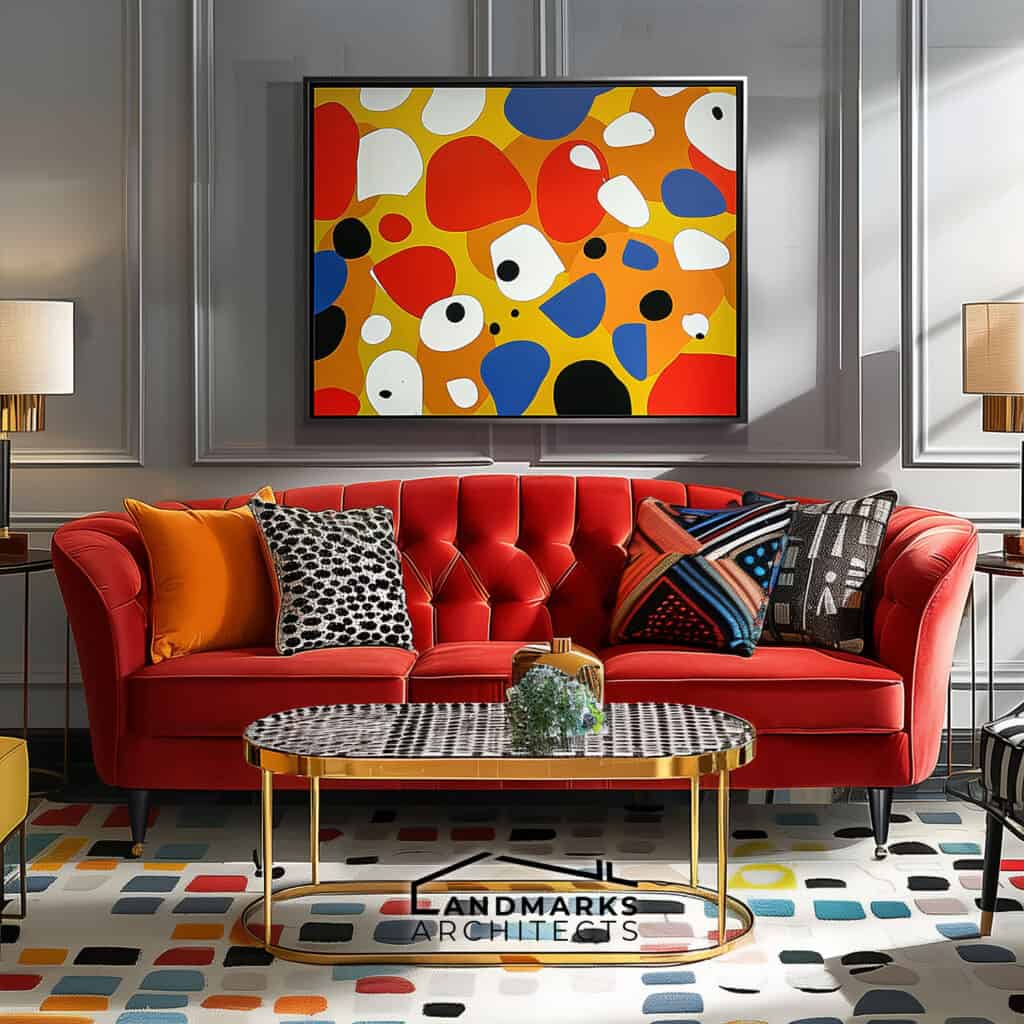
Postmodern interior design rejects traditional styles and uses bright colors and fun patterns. The color palette in postmodern design is often bold and surprising—like neon yellows, bright blues, and pops of red.
These bright colors go well with fun designs, such as pop-inspired wall art or bold patterns on furniture and fabrics. This makes the spaces lively and eye-catching.
The colorful decor is often mixed with different textures, like soft fabrics, shiny surfaces, and colored glass accents. This mix of materials and colors makes sure that postmodern interiors don’t feel flat. Instead, they are full of energy, engaging both the eyes and touch.
3. Blending Historical Styles with a Modern Twist

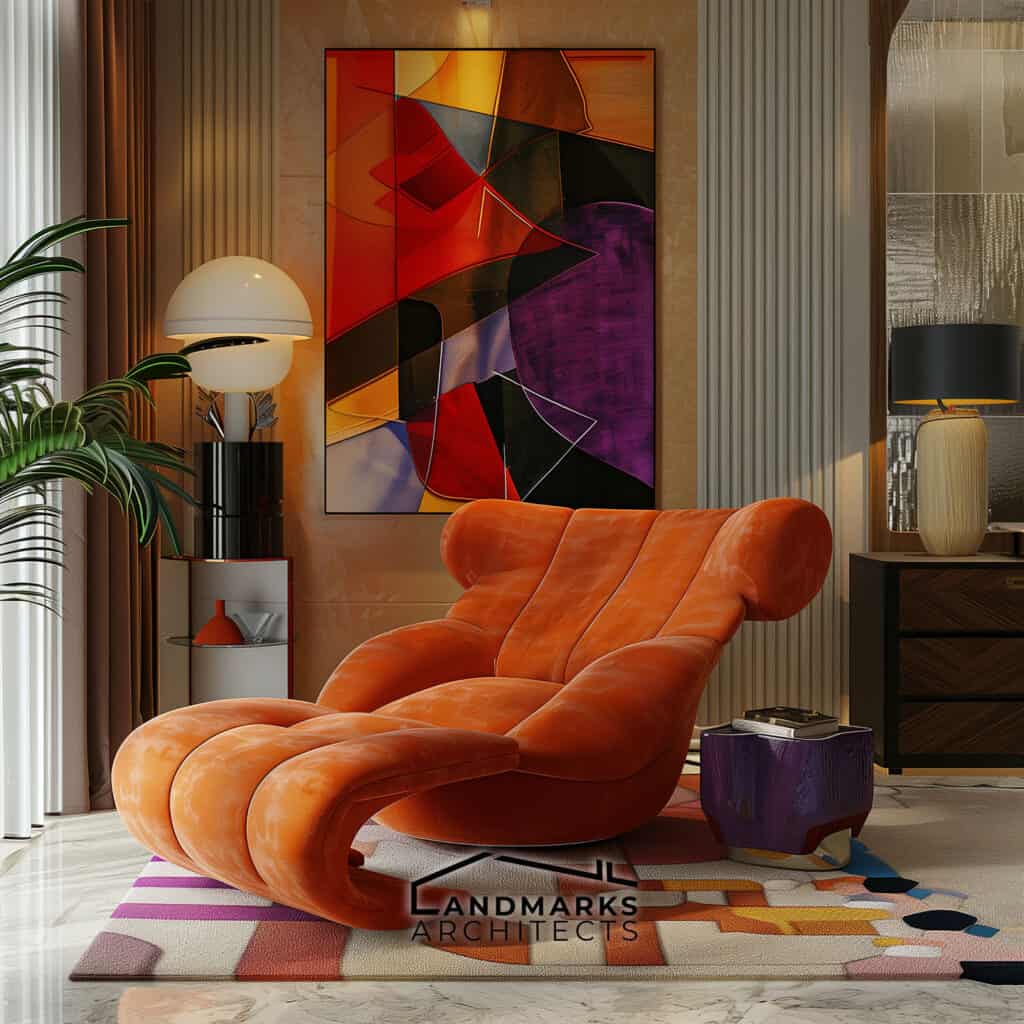
A key part of postmodernism is the mix of influences from different historical periods. Postmodern interiors often combine mid-century modern design, art deco elements, and classical architecture, but in a modern way.
This mix of old styles with modern furniture creates a fun response to traditional design ideas.
For example, a mid-century modern chair might be paired with postmodern elements like geometric shapes or bright colors. The result is a new design that celebrates both the past and the present.
Designers like Michael Graves and Robert Venturi used these historical ideas in their work. They wanted to move away from the rules of earlier styles and welcome variety and function in new ways.
4. Creating Unique Spaces with Statement Pieces
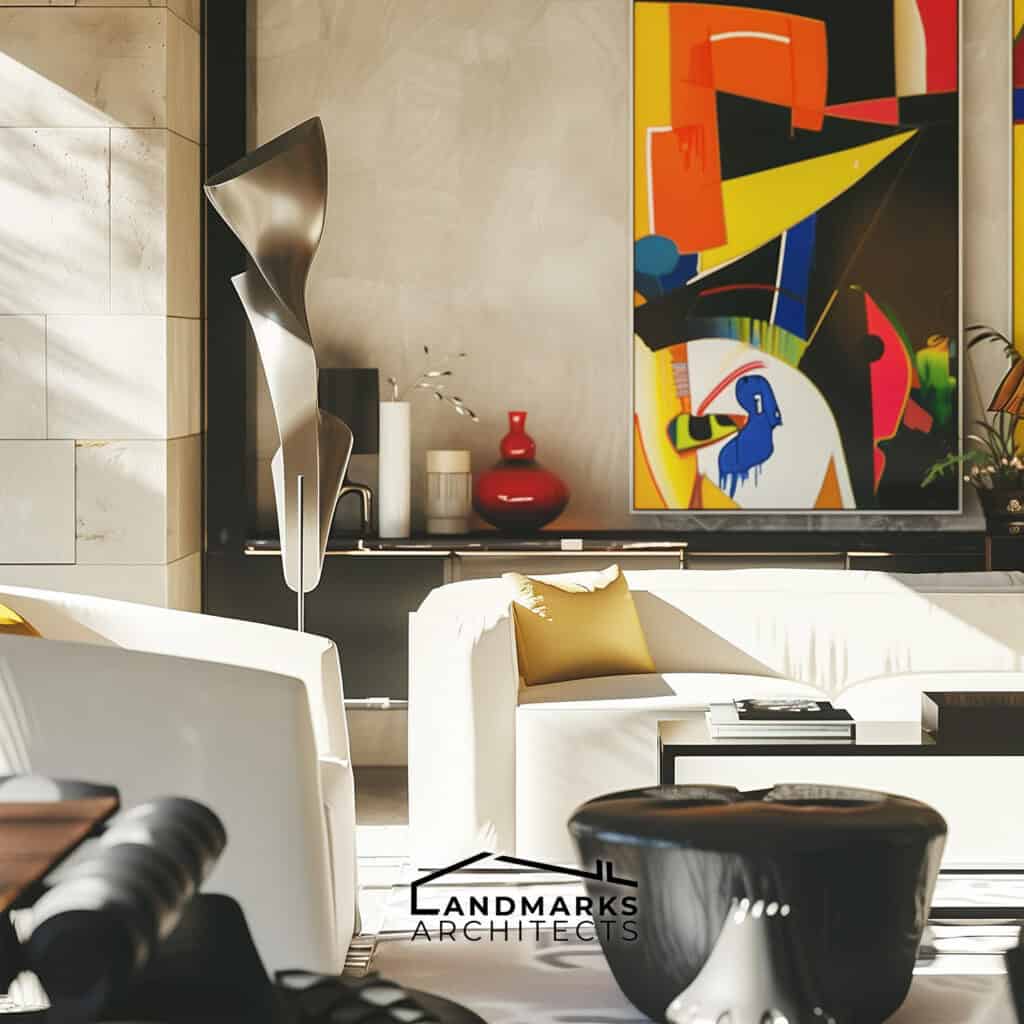
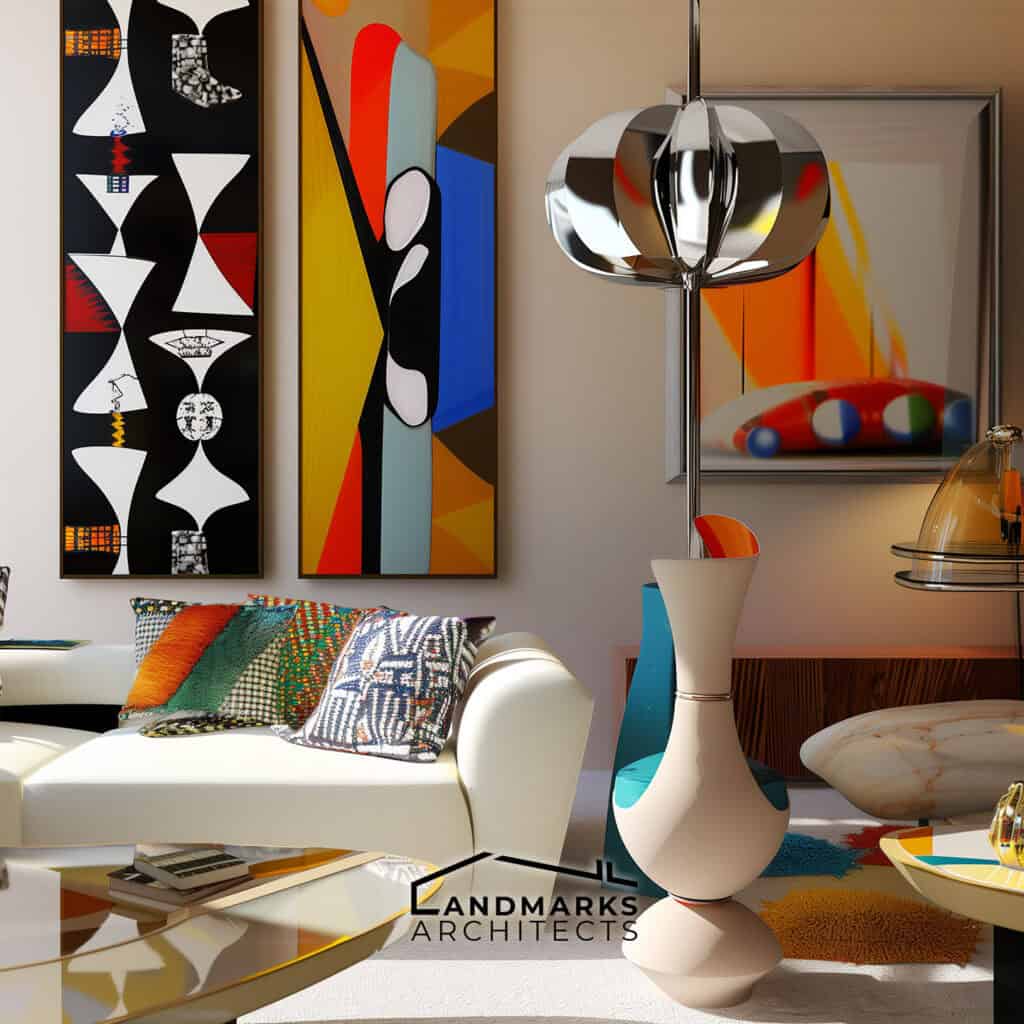
Postmodern interior design uses furniture and accessories as statement pieces. Instead of simple or matching designs, postmodern interiors mix bold styles and unusual shapes. Designers like Ettore Sottsass and architects like Robert Venturi often use famous furniture to create a unique look.
Statement pieces, like big lamps, abstract sculptures, or colorful wall art, become the main focus of a room. These items challenge old design ideas by focusing more on appearance than purpose.
This lets personal style and creativity stand out. They can also be paired with simple designs to balance the busy feel of postmodern styles.
See Also What is the Art Deco Style in Architecture? 3 Signature Elements to Know
5. Textures, Materials, and the Postmodern Look
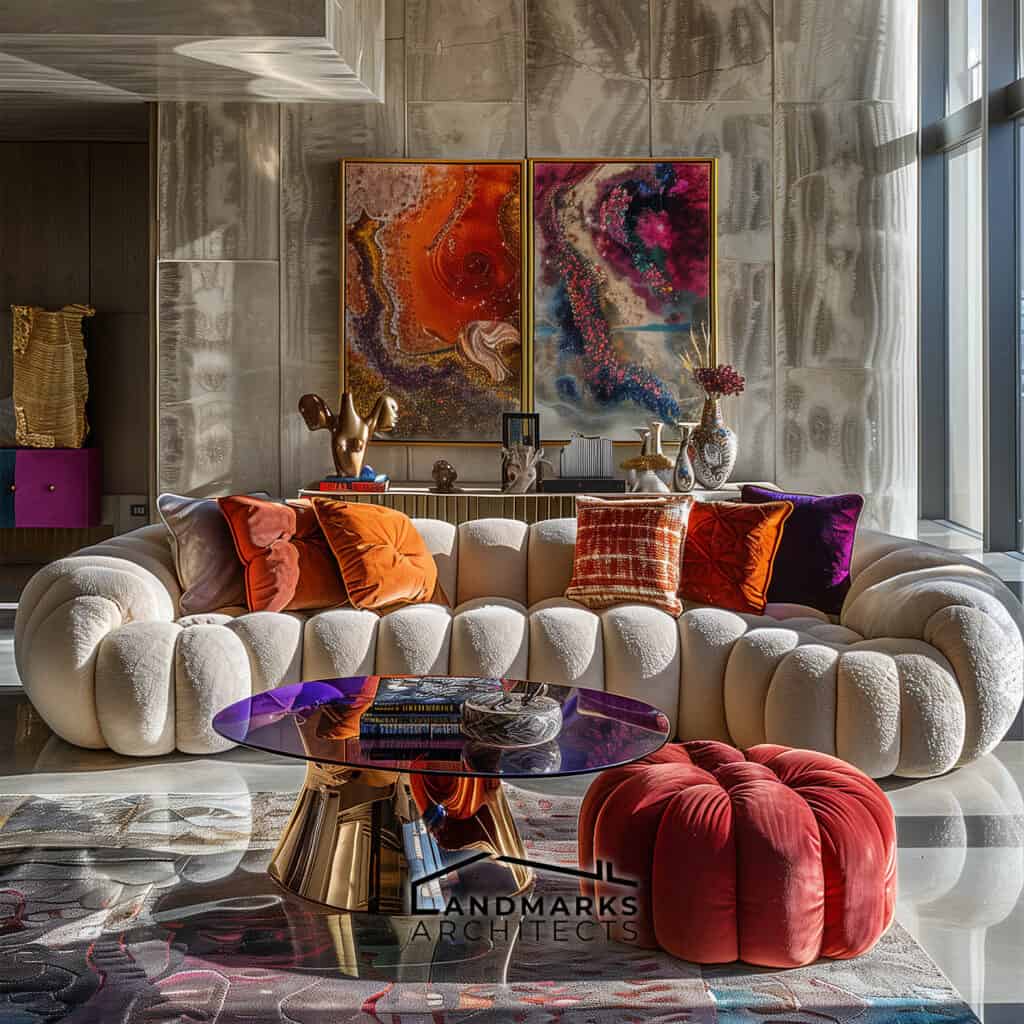
A main part of postmodernism is the focus on materials and textures. Using shiny surfaces, neon, and bright textiles adds depth to postmodern interiors. These different materials help make the space fun and interesting, showing the mix and energy of modern life.
Using soft fabrics, colored glass, and shiny finishes lets you explore different textures and shapes. The mix of soft and hard materials makes postmodern design welcoming and full of character.
Postmodern interiors encourage mixing styles, creating a lively and fresh atmosphere where personality can stand out.
Postmodern Interior Design: A Recap
Postmodern interior design is about being bold, fun, and breaking old rules. It uses bright colors, geometric shapes, and unconventional ideas. This style celebrates individuality, creativity, and humor.
By mixing styles like mid-century modern design with pop culture and historical influences, postmodernism offers many ways to show personal style and attitude.
It’s not just about how it looks—it’s a way of thinking that turns spaces into lively, unique places. Statement pieces, surprising textures, and playful colors make the room feel fresh and welcoming.










